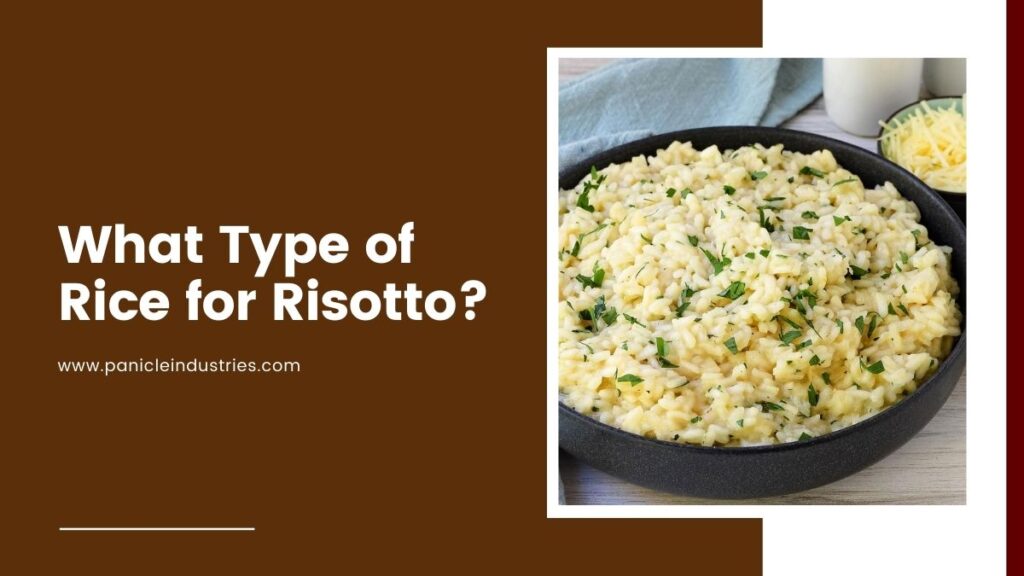Risotto is a creamy, comforting Italian dish that many people love to make at home. It tastes rich, soft, and full of flavor. But one big question often comes up—what type of rice for risotto is the best? Not all rice is the same. Some rice types turn mushy, and others stay too hard. That’s why choosing the right rice is very important when you make risotto. If you pick the wrong rice, your dish might not turn out creamy or smooth.
In this blog, we will explain the best rice for risotto, why it matters, and how to choose the right one when you go shopping. Let’s keep it super simple and clear.
Why the Right Rice Matters in Risotto
Risotto gets its creamy texture from the starch in the rice. When cooked slowly with broth, the rice releases starch into the dish, making it thick and creamy without adding cream. That’s why the type of rice you choose is very important.
If you use regular long-grain rice, like basmati or jasmine, it won’t work well. These types don’t release much starch, and they stay separate when cooked. That’s good for other dishes, but not for risotto. For risotto, you want rice that is short-grain or medium-grain, which absorbs liquid and gives off starch as it cooks.
Also read: Cooking Rice Absorption Method
What Type of Rice for Risotto – The Best Options
Let’s now talk about the best types of rice to use for making risotto. There are three main types that are often used in Italian cooking:
1. Arborio Rice
This is the most popular rice for risotto and is easy to find in stores. Arborio is a short-grain rice with a lot of starch. When cooked, it becomes creamy on the outside but still firm in the center. That’s the perfect texture for risotto.
- Good for beginners
- Easy to find
- Makes creamy risotto
If you’re new to risotto, Arborio is a safe and easy choice.
2. Carnaroli Rice
Carnaroli is often called the “king of risotto rice.” It has a bit longer grain than Arborio but still has plenty of starch. Carnaroli holds its shape better during cooking, which means it’s harder to overcook. It also gives a very creamy texture, even more than Arborio.
- Great for creamy texture
- Less chance of overcooking
- Used by professional chefs
If you want a slightly fancier or more reliable result, Carnaroli is a top choice.
3. Vialone Nano Rice
Vialone Nano is a medium-grain rice that’s smaller and rounder than Carnaroli. It absorbs liquid very well and makes risotto soft and creamy. It cooks a bit faster than the other two and is often used in Northern Italy.
- Soft and creamy result
- Cooks quickly
- Authentic Italian choice
It’s not as easy to find in regular stores, but it’s perfect for traditional risotto recipes.
Other Rice Types: What to Avoid
Now that you know what type of rice for risotto is best, let’s talk about the types you should not use.
❌ Long-Grain Rice (Like Basmati or Jasmine)
Long-grain rice stays fluffy and separate when cooked. It doesn’t release much starch, so your risotto will end up dry, not creamy. Save these for pilafs or fried rice, not risotto.
❌ Brown Rice
Brown rice is healthy but not right for risotto. It takes a long time to cook and doesn’t get creamy. It also has a different texture that doesn’t suit a traditional risotto.
❌ Sushi Rice
Sushi rice is short-grain and sticky, but it behaves differently. It doesn’t absorb broth the same way and can make risotto gluey instead of smooth and creamy.
How to Cook Risotto the Right Way
Once you choose the right rice, here’s a simple way to make risotto:
Ingredients:
- 1 cup Arborio, Carnaroli, or Vialone Nano rice
- 4 cups chicken or vegetable broth (warm)
- 1 small onion, chopped
- 2 tablespoons butter or olive oil
- 1/2 cup white wine (optional)
- Salt and pepper to taste
- Grated cheese (like Parmesan)
Steps:
- Heat the butter or oil in a pan and cook the onion until soft.
- Add the rice and stir for 1–2 minutes until it looks shiny.
- Pour in the wine (if using) and stir until it evaporates.
- Add broth one ladle at a time. Stir often and wait until it absorbs before adding more.
- Repeat until the rice is cooked and creamy (takes about 18–20 minutes).
- Add cheese, taste for seasoning, and serve warm.
Tips for Perfect Risotto
- Keep stirring. This helps release the starch and gives the risotto its creamy texture.
- Use warm broth. Cold broth slows the cooking process and makes the rice cook unevenly.
- Taste often. Stop cooking when the rice is soft but still has a tiny bite in the middle.
Common Risotto Mistakes to Avoid
- Adding all the broth at once. This will make the rice boil, not simmer. You won’t get a creamy result.
- Not stirring enough. Without stirring, the rice won’t release starch.
- Overcooking the rice. Risotto should be creamy, not mushy.
- Using the wrong rice. Remember, what type of rice for risotto matters more than you think!
Where to Find Risotto Rice
You can find Arborio rice in most grocery stores, usually in the rice or Italian food section. Carnaroli and Vialone Nano might be found in specialty food stores or ordered online. When buying risotto rice, look at the package for the name and check if it says it’s good for risotto.
Don’t buy just any short-grain rice unless it clearly says it’s for risotto. The texture and result may not be what you expect.
Conclusion
So, what type of rice for risotto is best? The answer is simple—go for Arborio, Carnaroli, or Vialone Nano. These rice types are full of starch, cook beautifully, and give you the creamy risotto texture that everyone loves. Long-grain or brown rice won’t work for risotto, no matter how hard you try. The right rice makes all the difference. It turns a simple dish into something rich and comforting. Once you choose the right rice, making risotto becomes easy and fun.
So next time you plan to make this Italian favorite, pick the proper rice, take your time, and enjoy every creamy bite.


